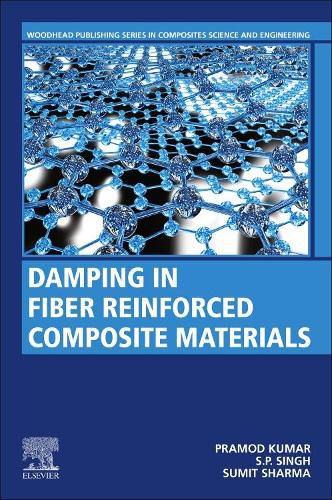Readings Newsletter
Become a Readings Member to make your shopping experience even easier.
Sign in or sign up for free!
You’re not far away from qualifying for FREE standard shipping within Australia
You’ve qualified for FREE standard shipping within Australia
The cart is loading…






Damping in Fiber Reinforced Composite Materials starts with an introduction to the basic concepts of damping in composite materials. Methods of modeling damping are then covered, along with recent developments in measuring techniques, both local, like polar scanning and global techniques like the Resonalyser method (based on measuring modal damping ratios of composite material plates). The effect of other factors, such as stress, strain-level, stiffness and frequency that need to be considered when determining damping behavior in composite materials are also discussed in detail.
Other chapters present a parametric study of a two-phase composite material using different micromechanical models such as Unified micromechanics, and Hashin and Eshelby’s to predict elastic moduli and loss factors. A bridging model that incorporates the effect of fiber packaging factors is then compared to FEM results. Final sections cover the effect of the interphase on the mechanical properties of the composite, present a nonlinear model for the prediction of damping in viscoelastic materials, and provide practical examples of damping and principles of vibration control.
$9.00 standard shipping within Australia
FREE standard shipping within Australia for orders over $100.00
Express & International shipping calculated at checkout
Stock availability can be subject to change without notice. We recommend calling the shop or contacting our online team to check availability of low stock items. Please see our Shopping Online page for more details.
Damping in Fiber Reinforced Composite Materials starts with an introduction to the basic concepts of damping in composite materials. Methods of modeling damping are then covered, along with recent developments in measuring techniques, both local, like polar scanning and global techniques like the Resonalyser method (based on measuring modal damping ratios of composite material plates). The effect of other factors, such as stress, strain-level, stiffness and frequency that need to be considered when determining damping behavior in composite materials are also discussed in detail.
Other chapters present a parametric study of a two-phase composite material using different micromechanical models such as Unified micromechanics, and Hashin and Eshelby’s to predict elastic moduli and loss factors. A bridging model that incorporates the effect of fiber packaging factors is then compared to FEM results. Final sections cover the effect of the interphase on the mechanical properties of the composite, present a nonlinear model for the prediction of damping in viscoelastic materials, and provide practical examples of damping and principles of vibration control.